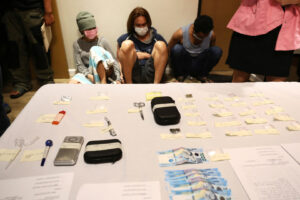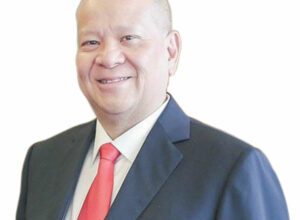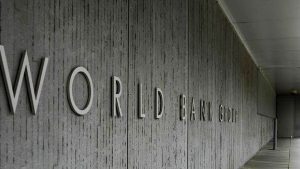Building paths and railways to sustainable growth

As part of the International Monetary Fund’s (IMF) consultation with the Philippines in December last year, the organization affirmed that the country’s economy has come out stronger, in part due to the authorities for their appropriate policy response and the recent implementation of key structural reforms to stimulate exports, spur foreign investment, and raise growth potential. Moving forward, the IMF recommended maintaining prudent policies to further rein in inflation, preserve fiscal sustainability, and increase financial resilience.
Sustaining efforts to address structural challenges is also important, particularly efforts to reduce infrastructure and education gaps, and to harness the digital economy. The organization emphasized the significance of enhancing corporate ease of doing business and fortifying governance.
Perhaps most importantly, directors at the IMF emphasized that poverty and inequality could be drastically decreased by improving infrastructure in two fronts: first, for social safety, education, and providing high-quality jobs; and, second, increasing resiliency to climate hazards and natural catastrophes.
On the latter point, the current administration is investing a substantial portion of the proposed P214.3-billion budget of the Department of Transportation (DoTr) for 2024 for the implementation of its “Build Better More” infrastructure program, the government’s multi-pronged program that aims to modernize the country’s infrastructure backbone to sustain rapid growth, attract investments and spread economic opportunities for all Filipinos.
The flagship public transportation projects with the most significant infrastructure impacts approved by the National Economic and Development Authority will receive a total of P176.4 billion from the DoTr’s planned 2024 allocation, according to a statement from the Department of Budget and Management (DBM).
The DoTr’s aviation and maritime infrastructure programs, the Land Public Transportation Program, the North-South Commuter Railway System, and the Metro Manila Subway Project Phase I are among such infrastructure projects.
Of all these, the Rail Transport Program would be allocated the lion’s share of about 76.4% of the proposed budget for infrastructure development, which is intended to support the advancement and building of modern railway systems all over the country.
“The investment will include projects, such as the North-South Commuter Railway System, the Metro Manila Subway Project Phase I, LRT (Light Rail Transit) Line 1 Cavite Extension Project, the Philippine National Railways South Long Haul Project, and the Metro Rail Transit Line 3 (MRT-3) Rehabilitation Project,” the department said.
The DBM said that around P76.3 billion would be set aside for the construction of the North-South Commuter Railway System, which will link Calamba, Laguna, and New Clark City in Capas, Tarlac.
The Metro Manila Subway Project Phase I, which will include 15 stations from Valenzuela City to Pasay City, would cost a total of P68.4 billion.
A Philippine National Railways train along the Naga-Ligao route, which officially opened last July 31
The Philippine National Railways South Long Haul Project, which will reconstruct the PNR South Main Line, will receive P3.1 billion from the government; the MRT-3 Rehabilitation Project will receive P2.9 billion; and the LRT Line 1 Cavite Extension Project, which will add 11 kilometers to the current railway system, will receive P4.7 billion.
Meanwhile, the Land Public Transportation Program will receive roughly P6.4 billion for a number of infrastructure initiatives.
The Davao Public Transport Modernization Project would receive approximately P1 billion; the EDSA Busway Project, P909 million; the Cebu Bus Rapid Transit Project, P700 million; the Active Transport Bike Share System and Safe Pathways Program in Metropolitan Areas, P500 million; and the EDSA Greenways Project, P263 million.
The Cebu Bus Rapid Transit (BRT) Project aims to establish a modern transport system utilizing approximately 176 buses operating on dedicated and exclusive bus-ways. This system will cover a 23-kilometer corridor from Bulacao to Talamban in Cebu City, with a link to Cebu South Road Property. Part of the funding for this initiative is provided by the World Bank.
Another project co-financed by the World Bank is the Quezon Avenue BRT Line 1 project, which envisions the establishment of a 12.3-kilometer bus system connecting Philcoa in Quezon City to Manila City Hall. This route will traverse Quezon Avenue and España Boulevard, providing an efficient and modern public transportation option.
The EDSA BRT Line 2 project, meanwhile, is a comprehensive initiative aimed at establishing a BRT system along the 48.6-kilometer EDSA route. The bus system will cover the Monumento to Diosdado Macapagal Ave./Roxas Blvd. stretch, with integrated routes connecting Ortigas Business District, Bonifacio Global City, and Makati Business District.
A portion of the ongoing North-South Commuter Railway Extension Project in Clark, Pampanga
The DoTr has also broken ground for the expansion of active transportation infrastructure across the country, primarily involving putting up bike lanes and creating the necessary infrastructure for safer cycling and promote active transportation within local government units. Among the areas where such infrastructure are being expanded are Laoag City, Ilocos Norte; San Fernando, Pampanga; Lipa City, Batangas; Intramuros in Manila; Quezon City; and Kalibo, Aklan.
“Expanding the Active Transport program here at Laoag will entail more than just putting up more bike lanes,” Transportation Secretary Jaime J. Bautista said in a statement.
“We also want to promote the safety of cyclists. We want to establish the necessary infrastructure to ensure cycling is a safe mode of daily travel, no longer just for leisure,” he added.
The project covers the establishment of 3.20 kilometers (both ways) of Class 1 and 2 bike lanes along several parts of the Laoag Bypass Road. It is targeted to be completed by the fourth quarter of this year, which shall benefit thousands of active transport users in the city.
“This push on infrastructure development is aligned with the Philippine Development Plan 2023-2028, and the country’s Medium-Term Fiscal Framework,” the DBM said.
President Ferdinand R. Marcos, Jr. underlined in his Budget Message the importance of augmenting the DoTr’s funding in 2024, pointing out the critical role that transportation policy plays in promoting sustainable economic growth.
“Transportation policy can have significant and lasting impacts on overall economic growth. Hence, with the urgent need to improve our country’s public mass transport system and reduce road congestion, we have doubled the budget for the DoTr from P106.0 billion in the fiscal year 2023 General Appropriations Act to P214.3 billion for 2024,” Mr. Marcos said. — Bjorn Biel M. Beltran




